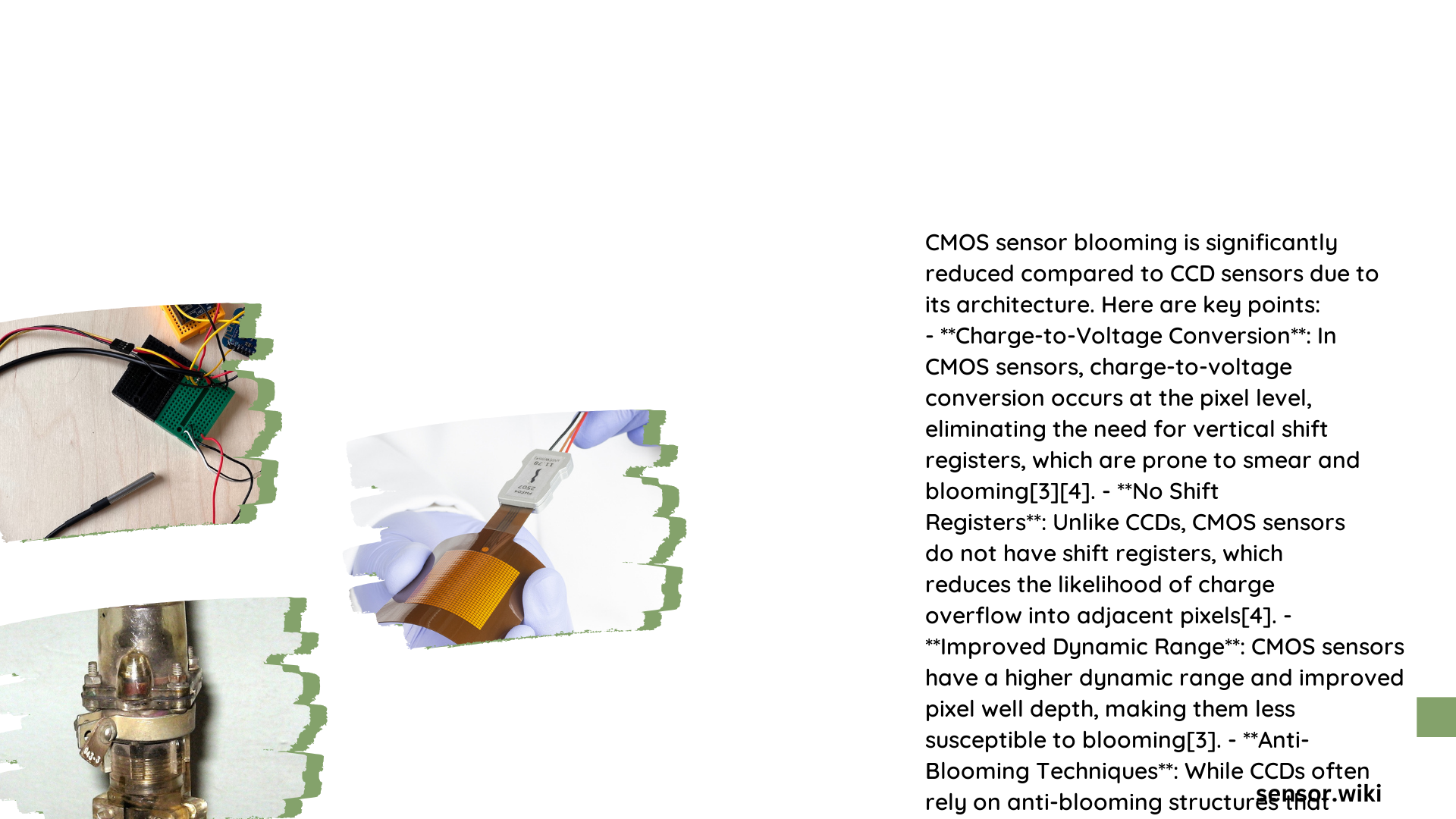CMOS sensor blooming represents a complex photographic phenomenon where excessive light exposure causes pixel saturation, potentially leading to unexpected image artifacts. Digital imaging professionals and photographers must understand the nuanced mechanisms behind this technical challenge to maintain optimal image quality across various imaging environments and applications.
What Causes CMOS Sensor Blooming?
How Do Light Intensity Trigger Pixel Saturation?
CMOS sensors capture light through individual pixel wells with specific charge-holding capacities. When incoming light intensity exceeds a pixel’s full well capacity, several critical interactions occur:
| Pixel Condition | Charge Behavior | Potential Outcome |
|---|---|---|
| Normal Exposure | Controlled Charge Accumulation | Accurate Image Representation |
| Moderate Overexposure | Partial Well Saturation | Slight Highlight Compression |
| Extreme Overexposure | Complete Pixel Saturation | Potential Blooming Artifacts |
Key Factors Influencing Blooming
- Pixel Well Capacity
- Determines maximum charge storage
- Varies by sensor design
-
Typically ranges 10,000-50,000 electrons
-
Illumination Intensity
- Direct correlation with potential blooming
- Higher light levels increase saturation risk
- Critical in high-contrast scenes
What Are the Technical Mechanisms Behind Blooming?
Unlike traditional CCD sensors, CMOS sensors have inherent architectural advantages that minimize blooming:
- Localized Charge-to-Voltage Conversion
- Distributed Pixel-Level Processing
- Advanced Charge Management Circuits
These design characteristics significantly reduce charge spillover probability compared to older sensor technologies.
How Can Photographers Prevent CMOS Sensor Blooming?

Practical Mitigation Strategies
Hardware-Level Interventions
- Adjust Exposure Settings
- Reduce exposure time
- Lower ISO sensitivity
-
Use neutral density filters
-
Select Appropriate Sensor
- Prefer back-illuminated CMOS sensors
- Consider larger pixel architectures
- Evaluate full well capacity specifications
Software-Based Solutions
- Dynamic Range Compression
- Highlight Recovery Algorithms
- Real-Time Exposure Compensation
What Are the Performance Implications?
Performance metrics demonstrate minimal image quality degradation when proper mitigation techniques are implemented:
| Performance Parameter | Impact Level | Recommended Threshold |
|---|---|---|
| Dynamic Range | Low Reduction | >12 EV |
| Signal-to-Noise Ratio | Minimal Variation | >35 dB |
| Color Accuracy | Negligible Deviation | ΔE < 2 |
Advanced Considerations for Professional Imaging
Emerging Technologies
- Quantum Sensor Architectures
- Machine Learning Compensation Algorithms
- Adaptive Pixel-Level Processing
Cost-Effective Recommendations
- Upgrade sensor hardware strategically
- Implement software calibration techniques
- Continuously monitor imaging performance
Technical Insights for Engineers
Professional imaging engineers should focus on:
– Comprehensive sensor characterization
– Advanced calibration protocols
– Predictive blooming modeling
Pro Tip: Always conduct systematic testing across varied lighting conditions to understand your specific sensor’s blooming characteristics.
Conclusion
Understanding CMOS sensor blooming requires a multifaceted approach combining hardware knowledge, software techniques, and continuous technological adaptation.
